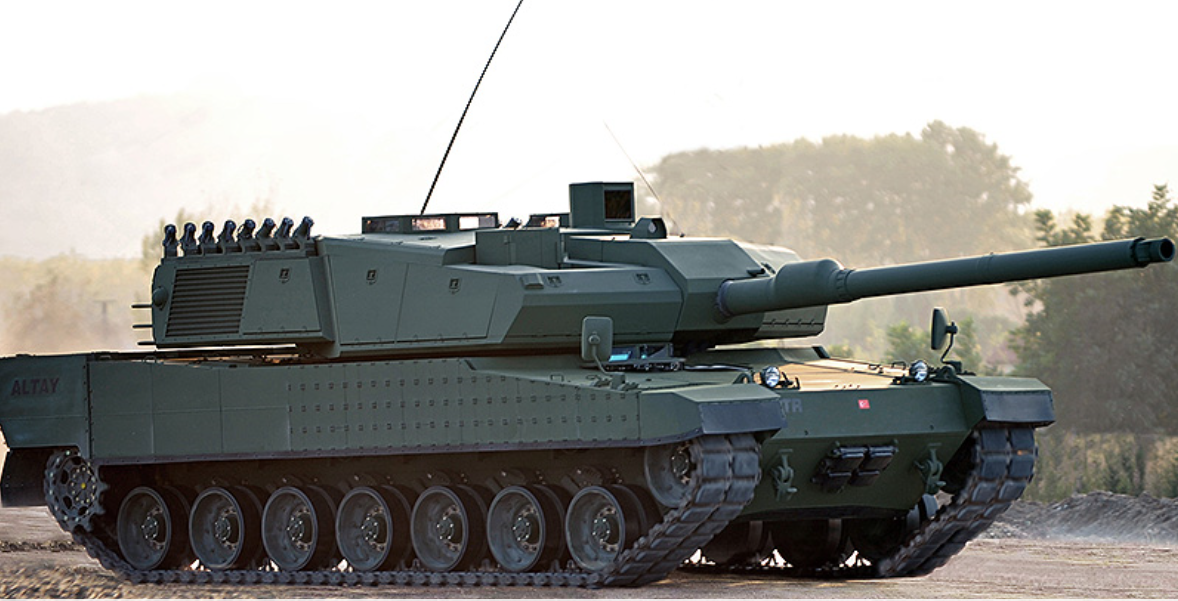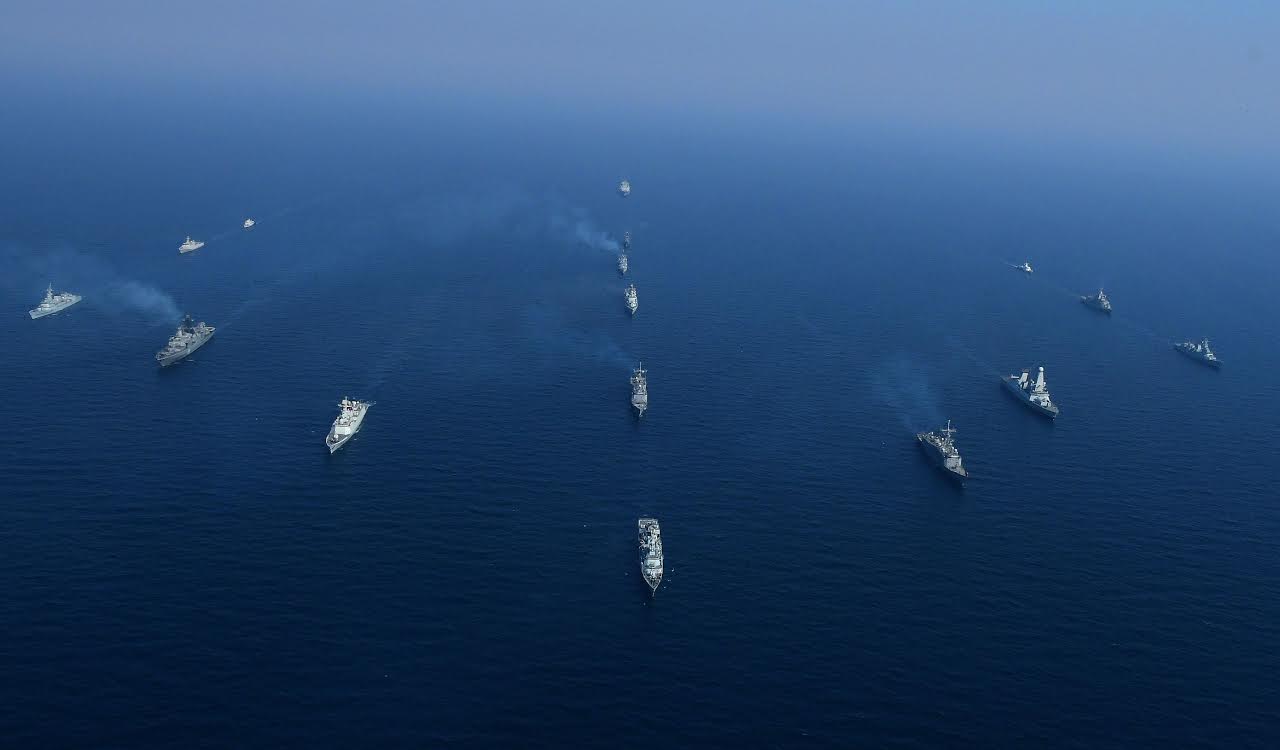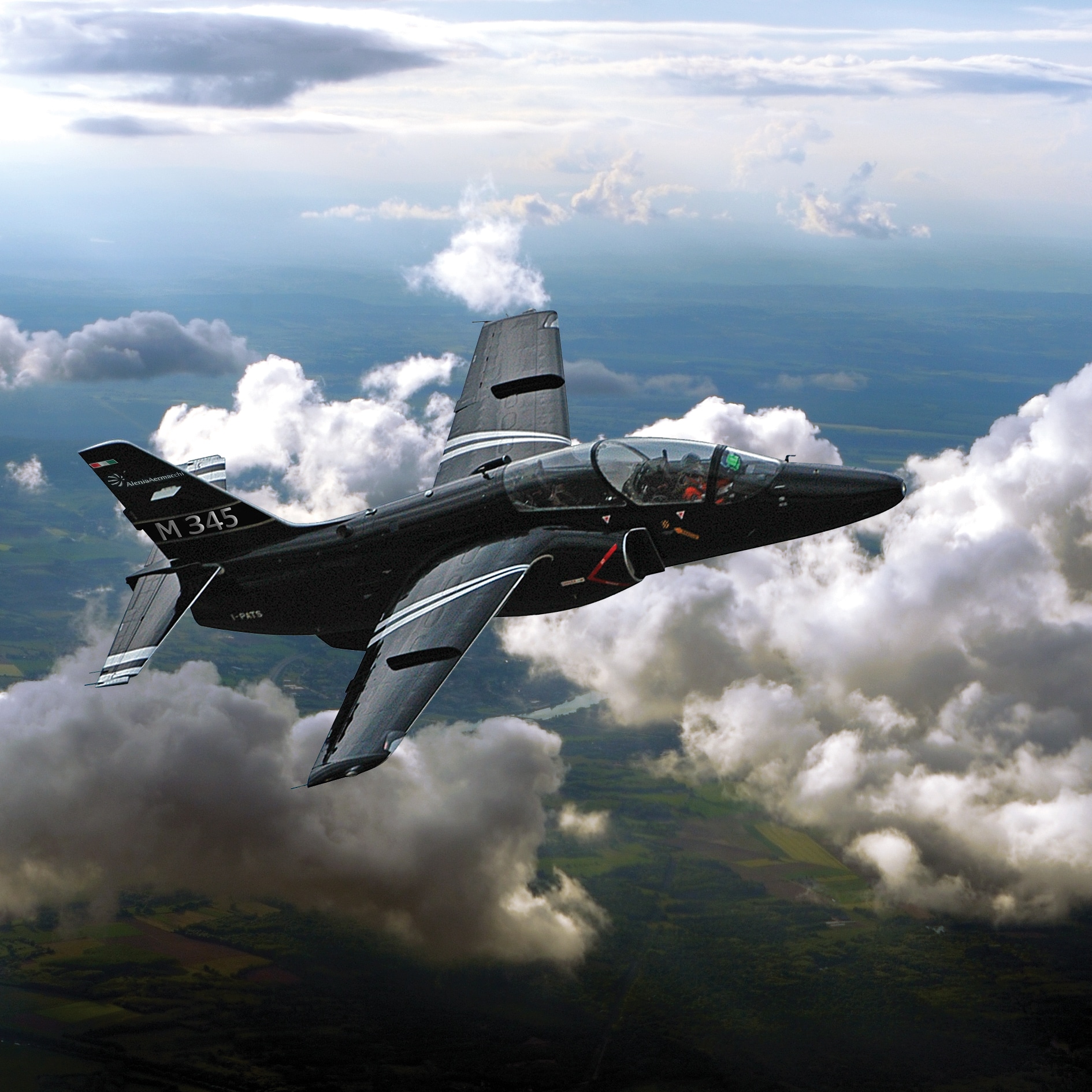3086Views 17Comments

Pakistan Reportedly Interested in the Altay MBT
18 January 2016
By Bilal Khan
Although it is in development, the Turkish Altay main battle tank (MBT) is drawing interest from a number of Turkey’s leading arms clients. Among the interested parties is Pakistan, which has sought to cultivate strong defence ties with Ankara, especially over the past decade through a series of arms purchases, joint-exercises and a bilateral pilot training exchange program.
Development of the Altay MBT formally started in 2007 with the aim of not only meeting the Turkish Army’s next-generation MBT requirement, but also to enhance the country’s capacity to source important defence equipment through domestic means. Otokar, a private Turkish firm, became the principal vendor of the program via a $500 million U.S. contract awarded by the Turkish government. In 2008 Otokar approached Hyundai Rotem in South Korea for technical assistance, thus enabling the Altay to draw on technology from the newly deployed K2 Black Panther MBT.
The Altay MBT is the central piece of the Turkish Army’s armour modernization roadmap. Although it should not be a surprise, given Turkey’s status as a NATO member, the Altay is a Western tank in terms of its design and goals: It is a heavyweight (65 tons) machine equipped with a 120mm smoothbore gun as well as two additional secondary armaments, a 12.7mm heavy machine gun and a remote-controlled turret. It is powered by a 1500hp diesel engine acquired from the German manufacturer MTU Friedrichshafen GmbH, which may be replaced by an indigenous system in the future. Finally, the tank’s all-round defensive resilience is drawn from its composite armour and an active protection suite.
As one might expect, the Altay is not going to come “cheap.” Hence the reason why Pakistan’s interest in this tank is very intriguing. Traditionally, Pakistan has largely sought to acquire lower-cost and lighter-weight tanks such as the al-Khalid and al-Zarrar (a substantial upgrade of the Chinese T-59), which could be acquired in far greater numbers. For Pakistan, the quantitative aspect is important. Firstly, Pakistan’s border with India spans nearly 3000km, and second, India itself has a numerically massive and technologically robust stable of tanks. A large number of tanks is necessary in order to scale that territory as well as manage against a numerically heavy enemy thrust.
With the above in mind it is certain that the Pakistan Army is not re-orienting itself towards a smaller number of NATO-standard tanks, which would be inappropriate relative to its geo-strategic realities. Instead, the Altay is being considered as a supplement to the al-Khalid series, which will continue its role in gradually (i.e. over the long-term) forming the mainstay of the Army’s tank forces.
The idea of a supplementary system came to the fore in 2015 when the “Haider” MBT requirement was revealed. At the time it seemed that the Chinese VT-4 would meet that requirement, but the Army rejected it. It is not clear if the Altay is being considered for the Haider program or as an entirely separate acquisition. In any case, the question of why another tank is being considered, especially an expensive platform such as the Altay, needs to be explored.
In general, Pakistan’s armoured forces in war would be oriented for either offensive (via strike corps) or defensive (via holding corps) formations. Precisely which of these aspects the Altay would fulfil is not known, but the Altay was designed to handle both roles. The payoff (in technology and performance) of the Altay over the al-Khalid must be substantial (relative to the added cost) in order for the Army to justify its addition to the Armoured Corps.
If added, the Altay could be deployed to locations where an offensive surge (or defensive resistance) is expected to be the strongest. High performance ratings in key parameters such as maintenance or serviceability on the field, durability against the natural elements, acclimation with the region’s environments, and battle performance (e.g. accuracy, agility and resilience against attacks) could make Altay regiments a particularly serious threat for the enemy.
However, cost will be the critical bottleneck. Given the expensive nature of the Altay platform the Army would likely have to pursue the program through incremental batch orders of 40-50 tanks, and the total Altay force within Pakistan would likely sit at around 300 tanks. In tandem with the actual tank, Pakistan may also be interested in acquiring some of the Altay’s armour and self-protection technology for use on the al-Khalid, especially its future versions.
One particularly interesting example is the Aselsan Akkor active protection system, which is currently under development. The Akkor is being developed to protect the Altay MBT (as well as other armoured vehicles) from anti-tank guided missile (ATGM) threats. Its laser-warning receivers would alert the tank of an attempted laser-lock, which in turn could trigger smoke dispensers to thwart the lock (i.e. “soft-kill” capability). The Akkor could also directly intercept incoming missiles (i.e. “hard-kill” capability) through the use of a “smart munition” which – after firing – calculates its distance relative to the approaching missile, and when close enough, detonates a high-explosive warhead against the missile.
It must be acknowledged that this prospect (if it is indeed one) is in its very early stages. Pakistan has been interested in big-ticket Turkish armaments before, such as the MILGEM corvette and the T-129 attack helicopter, but the reality of Pakistan’s financial woes ultimately put those ideas to rest. However, India’s induction of the Arjun Mk-2 as well as possibly the Russian Armata MBT, could lend significant momentum in favour of the Altay.



17 Comments
by jigsaww
Hi,
Do you know of any estimate of the completion of this Tank in terms of time?
Currently it is in prototyping phase, which means it is likely to take another 3 to 5 years for production to start, which means that Pakistan will not see its induction (provided it wanted it) before 5-7 years. Also i’m not sure what generation of tank is Altay? Is it an incremental improvement over K2 or something substantially new? It has to have high price because of its “western” design and manufacturing cost as well as korean and other western suppliers involvement. Price does not necessarily make it a better weapon also.
I would have liked if you gave a comparison of how Altay justifies its place in Pakistan army when compared to Alkhalid 1 and 2 and pakistan’s requirements for MBT3000.
by saqrkh
The Altay is billed as a 3rd generation tank, whatever that means, but it is a contemporary of the K2.
As for the Pakistan Army, that depends on the performance of the tank in Pakistani conditions. If the Altay possesses substantial practical gains, then it can supplement the AK and AZ; it’ll never be our mainstay, too expensive.
Altay regiments could serve from critical areas, e.g. high priority areas from which the Armoured Corps could launch moves into India. Alternatively, it could strengthen our defence against Indian IBGs.
One of the things that interests me about Altay is the active protection suite. In addition to soft-kill, which could bury a laser lock, it can intercept the actual missiles too (hard-kill. That is a huge gain (if achieved) against MMW guided munitions.
Pakistan can tie a purchase of Altay to a wider technology acquisition and development agreement with Turkey. Bring the new armour and self-defense technology to AK, AK1, AK2, etc
by jigsaww
Thanks. Let’s see if it fits the requirements once it’s ready. We’re seeing few years into the future i suppose. Too early to say.
by Abdul Rashid
“As for the Pakistan Army, that depends on the performance of the tank in Pakistani conditions”. Do you know what is it about the Pakistani conditions that makes the VT-4 unsuitable? Is it simply the Sindh desert environment? If so, I wonder why Pakistan does not take a suitable existing tank as a basis on which to modify and adopt for Pakistan’s needs rather than continuous expense and delays testing various options.
by saqrkh
Actually the VT-4 might have just failed due to technology maturation issues (Chinese engine and transmission), not so much the fundamental design, which is based off the MBT-2000 (i.e al Khalid). If resolved, it could end up being adopted.
by Mohsin E.
I’m a huge supporter of Heavy Armor. Light Eastern tanks only make sense in very large quantities, and we need to go for quality, because quantity isn’t even an option. In fact, with advances in cluster ammunition, massed armor only makes sense if you have air superiority anyway (and that’s not something we can assume we will have)…
The limiting factor is actually terrain, as heavier tanks can’t perform well in deep sand or mud. However, not all of our Eastern border is deep sand and mud. We need a mix of Heavy/Light tanks, and the K2/Altay is the perfect fit.
By the way, Heavy tanks such as the Leopard 2A4, M1A1, K2 are much more useful in offensives, rather than defense. Defense with heavy tanks is a waste of resources IMO as you can easily fortify static positions using light tanks. But only Heavy tanks can effectively punch through the enemy while on the move, being able to survive multiple hits.
by jigsaww
Performance is the first thing PA goes for without even needing to test systems and armor.
possible problems seem to be Extreme hot conditions affecting performance, bigger machine (52 ton) having less power (1300 hp), and most likely issues with subsystems.
This tank has most likely scored low on agility metrics.
Alkhalid the standard against which tanks are judged.
by Umit ALTAY
Turkish army has its last test in the freezing conditions in kars next month,then if the green light goes ahead otakar will build 250 + another 250 along with special armour along with akkor anti rpg and misile defence platform built on to it, it will cost around 13 million us dollars..
by jigsaww
Thanks. Good info.
fingers crossed.
by Umit ALTAY
The tank is named after my great grandfather Fahrettin Altay who fought in war of independence as a general. .All the other tests have passed nato standards with electronic warefare computers and software written by Turkish engineers,The Turret has laser guided locking mechanism and will hit its target in every mobility condition that the terrain has to offer,Its even bettet than the german latest tanks,If pakistan buys the the tank i am sure Aselsan will do tech transfer due to aselsan having a joint manufacturing facility in pakistan,The reason behind this is strategic so pakistan can keep the running costs down.
by jigsaww
Nice! Well i’m sure that is a big honor for you as well as your grandfather. Bless you both.
I know the tank will become a reality in few years. The only question is if Pakistan would be finding funds and space to buy it.
I believe Pakistan will require a new tank system in a matter of 5 years since its current gen tanks will become a generation behind by 2020.
This just might be it in numbers around 500, i hope in local production.
Probably the most impressive feature is an electrical engine. Instant acceleration and thermal stealth.
That is something like…Tesla of tanks?
by saqrkh
If anything the Pak Army could get by buying 40-50 tanks at a time, build a force (300?) over the long-term. The key would be to get the underlying technology and re-apply it to Khalid.
by jigsaww
Yes. I think Pakistan should buy eventually 500 of these tanks if they pass the tests and like you say, produce local tanks on this tech, in numbers greater than 1200.
Tanks will always remain relevant in Pak-India wars.
by Lophs
I think “light” and “heavy” tank classes are really applicable anymore. There is the main battle tank and everything else. If it is a main battle tank. they are roughly in the same class similar armor and protection. Most either sport a 120 mm nato smoothbore or a 125 Russian origin smoothbore and roughly the same armor protection on paper at least.
As for weight, it seems to be more of a case of Eastern designers being more tolerant of cramped and uncomfortable quarters and the fact that every Eastern tank since the 60 has an autoloader which reduces a crew which according to various resources naturally reduces weight by 13 tons, the amount of armor needed to protect the 4th crew member in his vulnerable spot next to the ammo.
So I am puzzled by Pakistan interest than the Altay. It is probably the best if one of the best tanks in the world, but it isn’t so good that it would warrant the cost considering Pakistani army is always strapped for cash and is in a one low intensity war or another. I think a more cost effective solution is to buy newer tank ammo that would defeat the Arjun 2. That what Nato countries are doing. Nato tanks have used the same 120 mm smooth bore on most tanks for decades. Any increases in effective armor is nullified by new improved tank ammunition theoretically. The Germans have a longer barrel 120 mm, but it isn’t standard.
by Mohsin E.
Armor details are classified, so we can’t say they’re all “roughly equal”. The Leopard 2A6 is around 20 tons heavier than the T-90, that’s almost an extra 1/2 the entire weight of the T-90. It’s safe to say it’s not just because of the auto-loader. As for the barrels, it’s not just what they fire, it’s how much of it they can fire per minute, which is a factor of how well they can handle heat without warping. Lastly, better sabot rounds should be researched, irregardless of how heavy or light your tank is, that’s a separate issue entirely.
by Lophs
It isn’t so hush hush, that publications like Janes that actually have people first hand experience with tank designs or former intelligence people can make pretty good estimates. If you look at Western tanks that do have autoloaders like the Lecleric which is actually newer than the Leopard 2, the weight savings from having autoloaders is pretty clear.
Most of the armor upgrades for the t70 and by extension t90 line have been upgraded gradually through light weight new generations ERA, not with more traditional armor necessarily. Look at Western tanks in battle conditions including the Challenger 2, Abrams, Lecleric in Yemen and you only see ERA on the side of the tank if they bother, not fully the full encased ERA on the turrets like the Russians tanks you have seen in Syria. IT seems the Germans and the American every couple of years add new armor plating increasing the weight of the tank.
Also Western tanks have ALOT larger profiles, when you see Polish t72s
with Abrams on joint exercise it is pretty jarring, thus my comments
about cramp spaces. In addition lower profile design means you need less armor all around b/c you simply don’t less surface space to protect, simple engineering design. Makes them harder to hit theoretically if the tank crew is competent to use the terrain to their advantage especially on defense in rolling terrain, but it also has disadvantages like obviously uncomfortable quarters and limited gun elevation which the Israeli exploited during their various wars on rough terrain and the Chechens used to a devastating advantage in Grozny ambushing t80 tanks high on buildings where the limited gun elevation couldn’t touch them.
Thus yes I do think most contemporary tanks have roughly the same armor and firepower. The weight difference is mostly b/c of different design philosophies. Western tanks probably have more emphasis on armor thus more tolerant of weight as a design philosophy considering you have monsters like M1a2 that tops at 70 tons adding things like DU plating, but considering them another class?
by Mohsin E.
The latest series leclerc is almost 60 tons, not much lighter than the 2A5. So Im not sure how your using it to support your argument, when it supports mine. You also admit western tanks have more emphasis on armor (not “probably”, most definetly) but you still claim they are similar in armor to eastern tanks (which focus on mobility) which seems like a contradiction. The rest of your points arent relevant to the issue of armor, they are related to tactics. I already dealt with this issue in my initial post. Heavy armor has a place in battle that cant be replaced by lighter tanks.